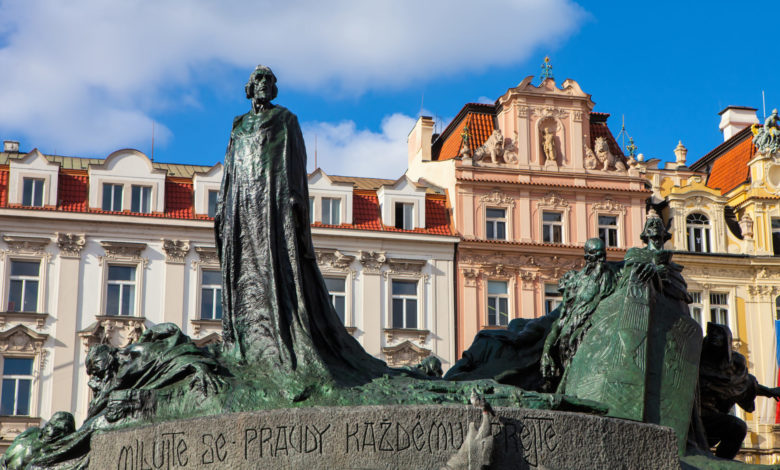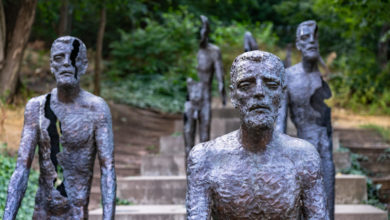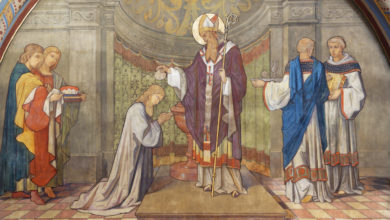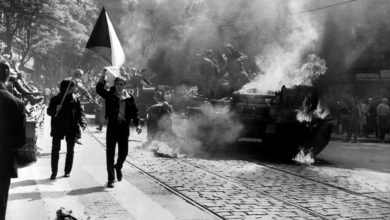The Hussites

The Hussite period is perhaps the most important in Czech history, but it is certainly the most exciting. Jan Hus was a university professor at Charles University, and he was a strong believer in the ideas of the English theorist John Wycliffe. Hus was the main protagonist in the movement to have a faith based on the Bible instead of the church hierarchy.
Perhaps his most radical belief was that all Christians should be allowed full communion, as at the time, it was only members of the clergy who were permitted to drink the blood of Christ. In fact, this part of his beliefs became so well-known that the chalice used for communion came to symbolize the Hussites. He rallied for church reform a full century before Martin Luther and also espoused his belief that indulgences should not be available for people to buy.
In 1415, Hus was summoned to Constance to appear before a church council. He was convicted of heresy and was burned at stake as punishment.
Hus’ death didn’t stop the Hussite movement, though – in fact, it galvanised it even more, and Bohemia soon became full of religious radicals. This led to the Hussite Wars. These wars began when a demonstration in 1419 by Hussites got out of hand, with the demonstrators forcing their way into the New Town Hall, before then throwing several Catholic councillors by throwing them out of the window – something that is a traditional Czech method of killing people, it seems. After the Hussites then destroyed some of the areas of the city, the king of Bohemia, Sigismund, began many crusades against the Hussites, which spread way outside of Bohemia’s borders. He was defeated on Vítkov Hill through the Hussite leader, Jan Žižka – a man with only one eye. There is a monument of Žižka at the spot where the battle was on today.
Stability was achieved when a Hussite king was elected in 1458, with this man being King George of Poděbrady (Jiří z Poděbrad). The nobility who elected him, though, did not do so happily. When he died, they invited the Polish Jagiellon dynasty to take the Bohemian throne, thus preventing the kingdom from falling into the hands of heretics for too long. After Vladislav II, the Polish King, died – after a reign marked by his powers being restricted by the Bohemian nobles and also him moving the capital to Buda in 1490 – he was replaced by Ferdinand of Habsburg, the brother of the Holy Roman Emperor Charles V. The Habsburg would go on to rule Bohemia until 1918.




